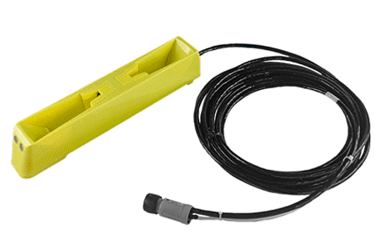New ParaFlow™ Non-Contact Area-Velocity Sensor Combines Depth, Velocity, And Temperature Data For Use With ADS TRITON+® Monitors

ADS Environmental Services® has announced the all-new ADS ParaFlow™ non-contact, area-velocity sensor that combines velocity, depth, and water temperature data collection into a single device.
The ParaFlow™ sensor is used with the ADS TRITON+® flow monitor, enabling wastewater collection system users to acquire accurate depth and velocity data with a non-contact sensor. Paraflow can also be used in concert with other ADS submerged sensors providing measurement redundancy. The TRITON+ and ParaFlow system send data to the ADS PRISM Cloud platform for continuous viewing by users.
The ParaFlow sensor measures four key parameters:
- • Depth - using non-contact ultrasonic depth
- Depth - surcharge pressure depth
- Velocity - Surface Velocity
- Velocity - surcharge continuous-wave Doppler velocity
- Water temperature
ParaFlow uses a patented parabolic reflector design for both velocity and depth that precisely focuses ultrasonic output to the target flow for more accurate and repeatable measurements. The sensor’s polycarbonate housing is highly durable and impact resistant.
The complete system is designed for a wide range of applications, including infiltration and inflow (I/I) analysis, model validation, flow billing, SSO/CSO spill management, reporting, and more.
About ADS
ADS Environmental Services, a division of IDEX Corporation, is the established leader for providing comprehensive flow monitoring services and equipment to agencies and municipalities in North America. The company designs its own hardware and software to assure and support superior quality of its services including field installation and maintenance, data analysis, and technical assessment of results. ADS technology empowers municipal managers, engineers, and operation personnel to identify and predict when, where, and how system failures might occur. They can better work to prevent system failure, thus improving the lives and health of the public.
